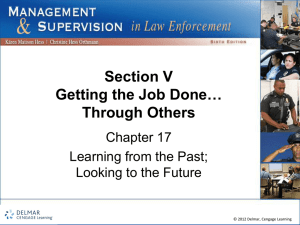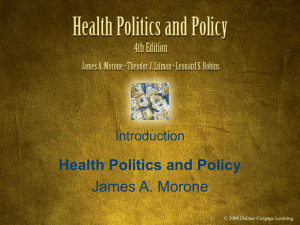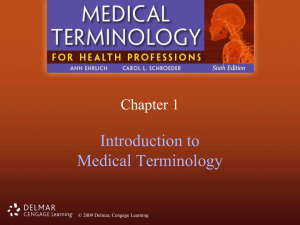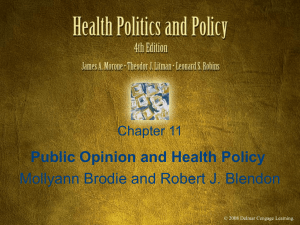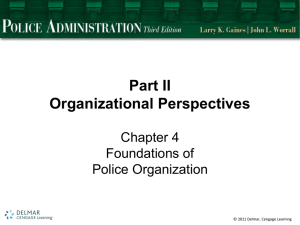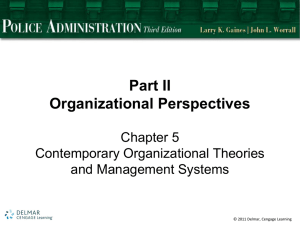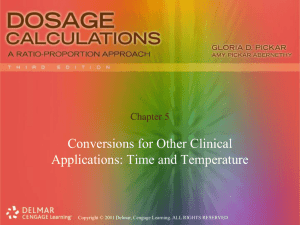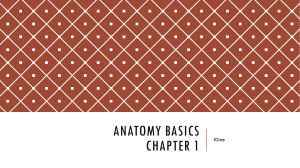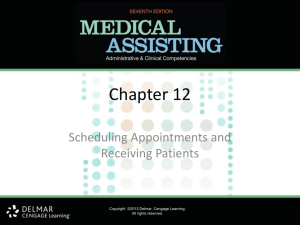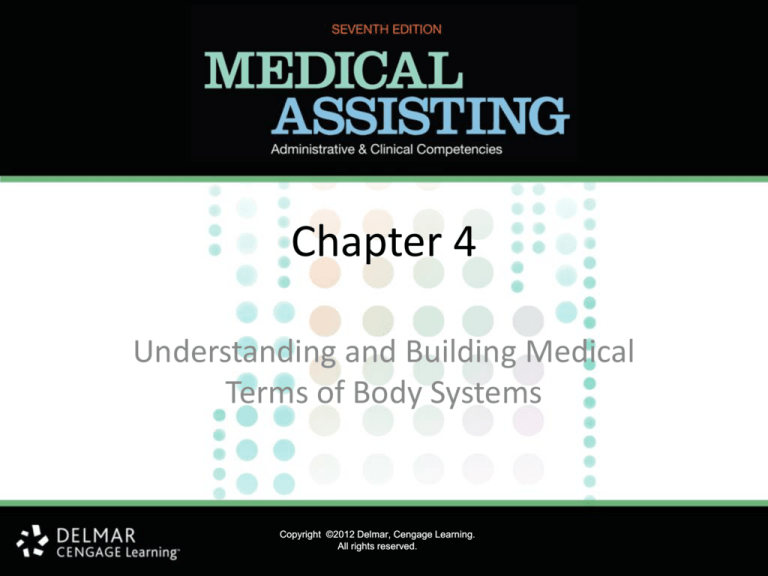
Chapter 4
Understanding and Building Medical
Terms of Body Systems
Copyright ©2012 Delmar, Cengage Learning.
All rights reserved.
Structure of the Human Body
• The basic unit of the human body is the cell
(combining form: cyt/o; suffix: -cyte)
• Cells organize to become tissue (hist/o)
• Tissues become organized to form organs
• Organs work together to be organized into
organ systems, and the human organism
Copyright ©2012 Delmar, Cengage Learning.
All rights reserved.
The Integumentary System
• The integumentary system
– Skin (integument/o, derm/o, dermat/o,
cutane/o), nails, hair, glands, and associated
structures
– The most external and visualized organ in the
human body
– The largest organ of the human body
• Dermatology = the study (-ology) of the skin
Copyright ©2012 Delmar, Cengage Learning.
All rights reserved.
The Musculoskeletal System
• Forms the structural support of the body
– 206 bones (oste/o) in the body
– 646 muscles (muscul/o, my/o) in the body
Copyright ©2012 Delmar, Cengage Learning.
All rights reserved.
The Cardiovascular System
• Composed of the heart (cardi/o) and its
associated structures
– Aorta (aort/o), arteries (arteri/o), and arterioles
are the vessels that transport the oxygen-rich
blood (hem/o, hemat/o)
• Also included with the cardiovascular system
are the blood system, lymphatic system, and
immune system
Copyright ©2012 Delmar, Cengage Learning.
All rights reserved.
The Respiratory System
• Lungs (pneum/o, pneumon/o, pulmon/o) and
structures that compose the respiratory
system, enabling us to breathe (spir/o)
• A related set of terms refer to air (aer/o) or
oxygen (ox/o), which keep our organs, tissues,
and cells healthy
Copyright ©2012 Delmar, Cengage Learning.
All rights reserved.
The Gastrointestinal System
• Stomach (gastr/o) and structures that assist
with the digestion of nutrients and food
(aliment/o)
• Accessory organs include the teeth (dent/i,
dent/o), tongue (gloss/o, lingu/o), liver
(hepat/o), pancreas (pancreat/o), and
gallbladder (cholecyst/o)
Copyright ©2012 Delmar, Cengage Learning.
All rights reserved.
The Urinary System
• Rids the human body of waste products that
build up in the bloodstream and excretes that
waste in the form of urine (ur/o, urin/o)
• The urinary system is composed of two
kidneys (nephr/o, ren/o), two ureters
(ureter/o), one bladder (cyst/o), and one
urethra (urethr/o)
Copyright ©2012 Delmar, Cengage Learning.
All rights reserved.
The Nervous System
• Two major divisions to the nervous system
– The central nervous system, consisting of the
brain (encephal/o, cerebr/o) and spinal cord
– The peripheral nervous system
• The functional cells of this system are neurons
(neur/o)
Copyright ©2012 Delmar, Cengage Learning.
All rights reserved.
The Endocrine System
• The organs of the endocrine system also are
very specific in the way they operate
– Each hormone secreted by an endocrine organ
targets a specific organ.
– The same hormone will not affect any other organ
within the body.
• The terms in this system will most often refer
to specific endocrine glands
Copyright ©2012 Delmar, Cengage Learning.
All rights reserved.
The Special Senses
• Organs that provide vision, hearing (audi/o),
balance and upright stature, smell (olfact/o),
and taste
– The eye (ocul/o, ophthalm/o), ear (aur/o, ot/o),
tongue, and receptors embedded in the skin
Copyright ©2012 Delmar, Cengage Learning.
All rights reserved.
The Reproductive System
• Allows humans to perpetuate the species
through new birth
• Both female and male reproductive systems
• This section includes terms relating to human
development from fertilization, pregnancy
(gravida), through birth (nat/o)
Copyright ©2012 Delmar, Cengage Learning.
All rights reserved.
Female Reproductive System
• The primary structure associated with the
female reproductive tract is the ovary
(oophor/o, ovari/o)
• Other structures are accessory organs
– The uterus (hyster/o, metr/o, uter/o)
– Fallopian or uterine tubes (salping/o)
– The vagina (colp/o, vagin/o)
– External accessory organs
Copyright ©2012 Delmar, Cengage Learning.
All rights reserved.
Male Reproductive System
• The primary structure in the male
reproductive system is the testis (orch/o,
orchi/o, orchid/o, test/o)
• Other structures are accessory organs
– The epididymis, vas deferens, seminal vesicle
– The prostate gland (prostat/o)
– The bulbourethral or Cowper’s glands
– External reproductive organs
Copyright ©2012 Delmar, Cengage Learning.
All rights reserved.

